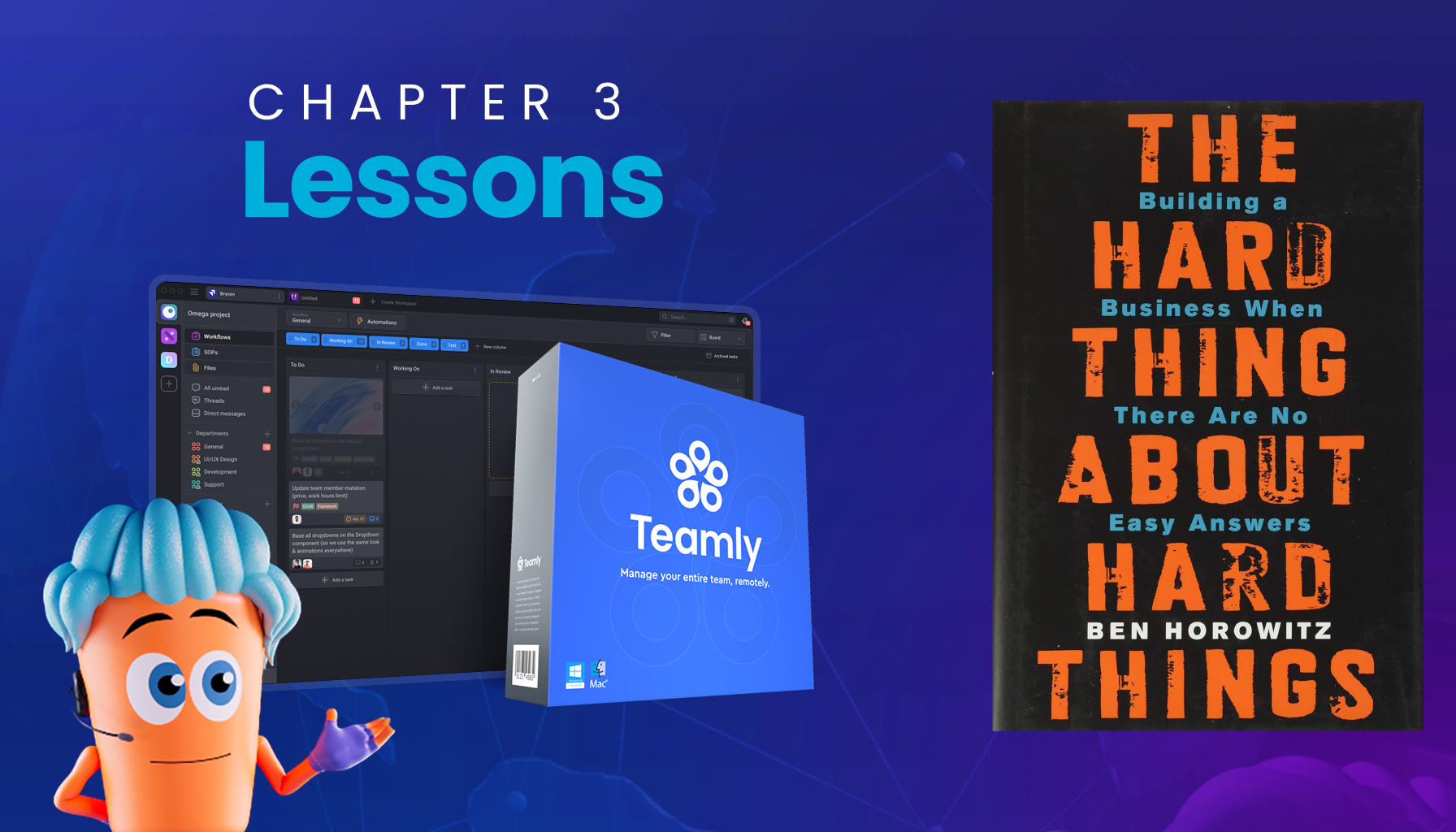
Click the button to start reading
Lessons from “The Hard Thing About Hard Things” by Ben Horowitz – Chapter 3
If you’ve ever wondered what it really takes to build a successful company, Ben Horowitz’s book The Hard Thing About Hard Things offers an unflinchingly honest guide.
It’s not just another business book filled with theory—this one delivers hard-earned lessons from the trenches.
In Chapter 3 of the book, Horowitz takes us through the crucial turning points in his journey. Here are the biggest lessons entrepreneurs, leaders, and business owners can take away from his experience.

Leading Through Transparency: When Everything’s on the Line
Imagine watching your stock price plummet to $0.35 a share. That’s exactly where Ben found himself after selling EDS. Large shareholders bailed, and the company was hemorrhaging cash.
Most leaders would panic, but Ben took a different route—he gathered his employees and gave them a brutally honest view of where the company stood.
Ben knew that sugar-coating the situation wouldn’t work. So, he opted for transparency and honesty. He called his employees to an offsite meeting, laid out the company’s grim future, and asked them to stay committed.
He even offered stock options to motivate them. Two employees quit, but the rest stayed, understanding that their future was tied to the company’s success.
The lesson here? When the stakes are high, be honest with your team. Not only does it build trust, but it gives your employees a sense of ownership in the fight ahead. If you’re using a platform like Teamly, this kind of transparency can be shared easily across your organization to keep everyone aligned.
Launching an Imperfect Product is Better Than Waiting for Perfection
After getting his team on board, Ben was faced with a dilemma. Opsware wasn’t ready for market—it was a product designed for internal use, and the engineers were worried about launching something half-baked.
But Ben understood something that every entrepreneur needs to learn: sometimes, waiting for perfection means missing your window of opportunity.

Rather than spending months or years perfecting the product, he decided to launch and let the market give feedback.
Yes, the product wasn’t perfect. Yes, they’d learn some lessons the hard way. But this move allowed Opsware to stay in the game and iterate based on real-world user feedback.
For business leaders, this is a critical takeaway. If you wait for your product or service to be flawless, you’ll miss the chance to learn from real customer reactions. Get your product out there, learn, adjust, and keep moving forward.
Sometimes You Need to Rebuild the Team
As Opsware struggled through its early years, Ben realized something hard: his team wasn’t equipped to handle the company’s challenges.
His CFO didn’t understand software accounting, and his head of sales had no background in selling software. It wasn’t that they were bad at their jobs—it was that the jobs had changed, and they hadn’t adapted to the new demands.
Ben made the tough decision to rebuild his executive team. It wasn’t easy, but it was necessary.
New hires brought the skills Opsware needed to succeed, and the company’s performance improved. Eventually, Opsware’s stock price rose from $0.35 to over $7 per share, thanks to a renewed focus on bringing in the right people.

In business, sometimes even the best employees outgrow their roles. Leaders need to make difficult decisions about replacing key personnel to ensure the company can adapt to new challenges. It’s not about loyalty, it’s about survival and progress.
Prioritize Innovation Over Customer Feedback
When Opsware found itself being outperformed by competitors like BladeLogic, Ben realized they weren’t losing because they weren’t working hard—they were losing because their product wasn’t competitive enough.
He called an all-hands meeting and told his team they needed to focus on improving the product, and fast.
But instead of relying solely on customer feedback, Ben made it clear that they had to innovate. Customer feedback can only tell you what they think they want, but it’s the innovator’s job to create something customers didn’t even know they needed.
For Opsware, this meant focusing on server automation. It wasn’t on the customers’ radar yet, but it soon became the most important feature for future growth.
Every company faces this same challenge: balancing current customer needs with future innovation. You can’t rely solely on feedback; sometimes you need to take risks and anticipate future market needs.
Mastering the Art of Sales
Ben gives much credit to Mark Cranney, the head of sales, for turning Opsware’s fortunes around.
Mark was relentless in his expectations, demanding mastery in every part of the sales process. His approach was simple: no tolerance for failure in execution.
Mark revamped the sales process, trained every salesperson rigorously, and pushed them to their limits. His hard-nosed approach paid off, as Opsware began winning deals that had previously seemed out of reach.

Sales isn’t just about having the right product—it’s about flawless execution.
Whether it’s refining your pitch or understanding your customer inside and out, the smallest missteps can cost you big deals. For Opsware, mastering sales execution was the difference between survival and failure.
The Power of a Strategic Acquisition
In the book, Ben shares how the acquisition of Rendition Networks became a game-changer for Opsware.
Despite Rendition’s weak revenue performance, it had the best product architecture in its space. Opsware needed a better product, and buying Rendition provided exactly that.
A strategic partnership with Cisco further solidified the deal’s value, as Cisco paid for advanced licenses that more than covered the acquisition cost.
The lesson here is simple: acquisitions shouldn’t just be about financial gain. Sometimes the right acquisition brings the technology, talent, or market position you need to leapfrog the competition.
The Ultimate Decision: To Sell or Not to Sell
One of the most emotionally charged moments in the book is when Ben has to decide whether to sell Opsware.
With offers rolling in and potential acquirers like Hewlett-Packard (HP) pushing hard, Ben struggled to determine the right move. After standing firm on his asking price of $14 per share, HP eventually agreed, and Ben sold Opsware for $1.65 billion.

Despite the success, Ben was emotionally torn. Selling Opsware felt like the end of a long journey, filled with sleepless nights, intense stress, and personal sacrifice.
But looking back, he realized it was the best decision he could have made. Selling allowed him to take what he learned and move on to his next venture: starting a new kind of venture capital firm.
Ben’s story reminds every entrepreneur that sometimes, the hardest decisions are the right ones. Knowing when to walk away or sell can be the key to unlocking future opportunities.
Want to learn more from Ben Horowitz’s incredible journey? Get your copy of The Hard Thing About Hard Things on Amazon today!
















